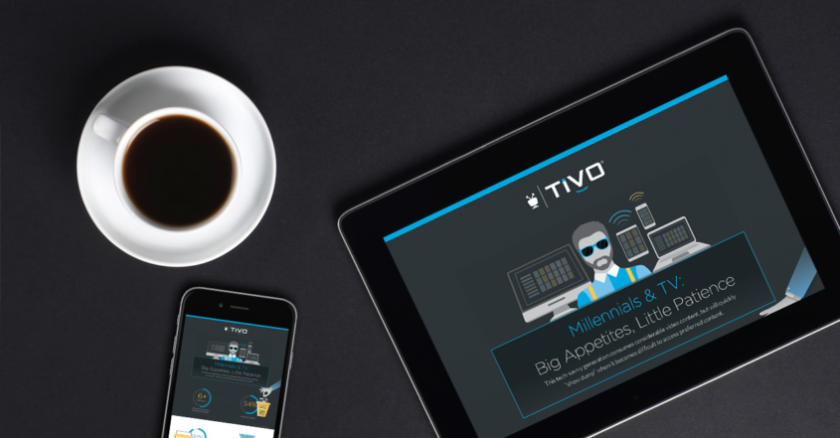Connections

CES 2018: TiVo Eyes Consumer Video Trends
Story Highlights
LAS VEGAS — The average consumer around the world views 4.4 hours of video a day, and spends nearly 30 minutes just looking for content, according to a new study by TiVo, released at CES. That’s 20% of daily life spent on entertainment content.
TiVo found that 90% of households currently subscribe to a traditional pay TV service, and that more than 60% are also subscribers to at least one streaming service. More than half of pay TV subscribers said they’ve had their service for four years or longer, while more than 10% who’ve had their pay TV service for a year or less said they’re very likely to cut the cord within the next six months.
TiVo found that in Latin America, 50% of all viewing takes place on a digital device vs. a TV. That’s compared to 75% of American viewers saying that more than 75% of viewing takes place on a TV. “The survey results reinforces a lot of the trends we’ve been seeing,” said James Denney, VP of product management and strategy for TiVo.
“Consumers today are acting as their own aggregator, piecing together what they need from a variety of video service and device combinations to suit their individual needs,” added Paul Stathacopoulos, VP of strategy for TiVo. “Success in this new environment will not be about a single content source monopolizing the living room, instead it will be about adapting the business model to deliver value, integrated services and personalization to meet the evolving consumer needs.”
Also at CES, TiVo announced smart home integration with Amazon Alexa and Google Assistant, incorporating TiVo’s entertainment experience into the popular at-home devices. “There’s no doubt we are in the midst of a smart-home revolution. TiVo’s innovations are helping bring about this radical new approach to your technology and how you interact with it,” TiVo wrote in a blog post.
Also at CES:
NeuLion
For NeuLion EVP Chris Wagner, the explosion of OTT services and the data surrounding how viewers are watching content are the perfect storm for his company.
At CES, he showed off the company’s Ace Analytics and real-time OTT dashboards, which offer unprecedented insight into how viewers are watching content, what devices they’re watching on, basically everything a marketer would need to help reduce churn and provide more personalization than ever before.
“What Google did for car traffic, we’ve done for video traffic, all in real-time,” Wagner said.
The browser-based platform allows operators to hone in on specific viewers and what they’re watching, how long they watch, what’s popular in which regions, and the devices and apps used to access the content. If you can think of it, there’s a filter to use, Wagner said. “This deep analysis and summary reports can help retain subscribers,” he added.
NeuLion also touted some of its work with partners using the NeuLion Digital Platform, specifically an OTT offering National Geographic has debuted in Australia. Geared specifically toward mobile users, the NatGeo service offers two linear channels and more than 3,000 hours of VOD content, as well as articles, photos and more.
Hyper-personalization is the key, with viewers able to personalize by topics and animals, allowing the service to recommend content viewers would otherwise waste time searching for. “The whole thing with personalization is it really drives retention,” Wagner said.
Sony
At its always-well-attended press event, Sony Electronics debuted a slew of new products, including its first Dolby Vision-capable 4K Ultra HD Blu-ray Disc player, the UBP-X700. The player also supports the standard HDR 10.
The UBP-X700 offers access to 4K streaming services including Netflix, Amazon Prime Video and YouTube, and supports other video and music formats, including MP4, DSD and FLAC.
Sony also debuted the STR-DH790 7.2 channel Dolby Atmos 4K HDR AV receiver which can pass through HDR 10 and Dolby Vision signal without any loss.
On the TV side, Sony debuted new premium OLED and LED 4K HDR TVs, with its new A8F Bravia OLED 4K HDR TV series and X900F 4K HDR TV series both incorporating Dolby Vision support.
“Our OLED TVs have been extremely well received by bringing exceptional picture and sound quality together and the X900E has been amongst our most popular LED TVs.” said Mike Fasulo, president and COO of Sony Electronics, North America. “Building on the great successes of the X900 and OLED TV series, we are further expanding the choices for consumers by introducing the new X900F LED and A8F OLED TV models.”
Sony’s 2018 Android TVs also have Google Assistant built-in, allowing for voice control and access to other smart home devices.
Additionally, Sony showed off the handheld MP-CD1 Mobile Projector which can project content up to 120 inches in size from a distance about 12 feet. The MP-CD1 weighs less than 10 ounces and will retail for $400 this spring.









